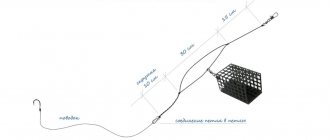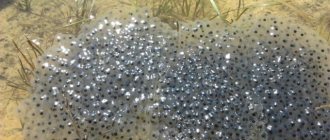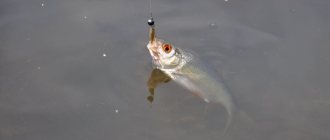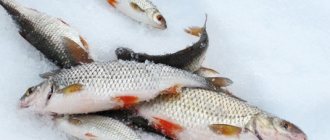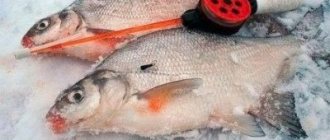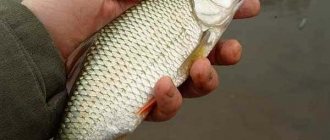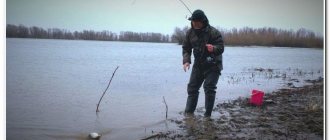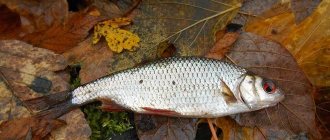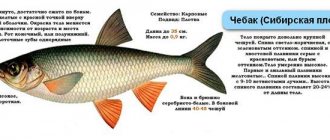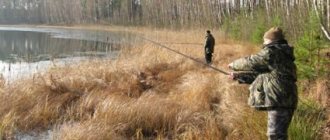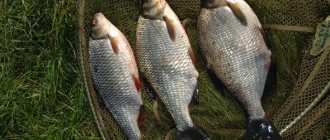Description
Roach (lat. Rutilus rutilus)
- a species of fish from the carp family (Cyprinidae). It has many subspecies, some of which have their own names: ram, roach, soroga. In Siberia, at least in its western part, and in the Urals, the common name for roach is chebak.
The roach has a blackish back with a green or blue tint, as well as silvery sides and belly. It differs from the closest species in having non-serrated pharyngeal teeth located in a row on each side, rather large scales, a mouth located at the end of the snout, and a dorsal fin that fits above the base of the ventral fins.
The scales of the fish are colored silver-white, and all fins, except the tail and dorsal, are orange-red. It is believed that the roach has a brighter color than its related roach.
Adults of this fish feed on various invertebrates, their larvae, mollusks; in summer, the diet of roach may include filamentous algae.
At the age of three to five years, the fish reaches sexual maturity. As a rule, roach breed from March to May, when the water temperature no longer drops below eight degrees Celsius. Its eggs, whose diameter reaches one and a half millimeters, stick to plants.
Roaches spawn in large flocks, spawning (from 2.5 to 100 thousand eggs) takes place at a time, and the spawning itself is very noisy. The development of roach eggs occurs within nine to fourteen days, after which the larvae begin to independently feed on smaller vertebrates.
Semi-anadromous forms of roach (roach) grow much faster, and their fertility is almost twice as high. Adults return to the sea, where they begin to feed heavily.
When does ide spawn?
Depending on temperature conditions, spawning of pike perch can begin either in mid-April or at the end of May.
In reservoirs in the middle zone, it usually occurs at the end of May - beginning of June. For spawning, the water in the river must warm up to 7–10 degrees. At this moment, the pike perch goes to quiet areas with aquatic vegetation, usually without current, with depths of up to 5 m; more often, the spawning grounds of pike perch are at depths of about 1.5–2 meters. The substrate for laying eggs can be branched roots of reeds, sedges, rhizomes of water lilies, roots of various shrubs, coastal or sunken trees. The female removes the silt by moving her fins and prepares a nest - an oval platform with a diameter of 25 to 60 cm. The eggs are laid in one step, after which the male who fertilized it remains at the nest to guard the clutch.
https://www.youtube.com/watch?v=ytcreatorsru
Perch spawns in late April – early May at a water temperature of 15–16°. Eggs are deposited in shallow waters in the middle of last year's flooded vegetation and even in the middle of willow bushes. Spawning proceeds silently and inconspicuously. The caviar is sticky and quite large. Females deposit it on plants in the form of long slimy ribbons.
Bream spawns in May at a water temperature of 12–15° in grassy shallow waters. For spawning, it gathers in huge flocks. If the weather is calm and nothing scares the fish, spawning is very active. Females spawn eggs on last year's vegetation. Under favorable conditions, the flock completes spawning within 4–8 days. The eggs are spawned completely at one time, unless there is a sudden drop in temperature.
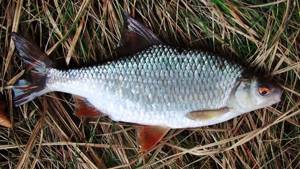
It breeds in June at a water temperature of at least 16–18°. Spawning occurs in flooded meadows at shallow depths. Females spawn eggs at night and in the morning after sunrise. Throwing is portioned. In case of sudden fluctuations in water level, a lot of eggs die, since they are deposited at a very shallow depth. The eggs are sticky, drowning, yellow in color, and are deposited on plants flooded with water.
Ide spawns early, at water temperatures from 5–6° to 10–12°. The ide spawn begins a few days after the pike begins spawning and ends several days earlier than its spawning. Spawning takes place on coastal dumps, ridges, rocky and pebble rifts or near sunken trees. Spawning is gregarious, quite noisy, and occurs in the morning and evening dawns and at night. The caviar is yellow, small, sticky, sticks to various underwater objects (stones, piles, snags).
We suggest you read: When can you start catching crucian carp in the spring?
It breeds in early May at a water temperature of approximately 10° on sand and pebble rifts. The caviar is sticky and sticks to soil particles (pebbles, pebbles, gravel).
Spawning occurs when the water warms up to 18–20°, in the second half of May–June. Crucian carp spawns among thickets in shallow waters. His throwing is done in portions. During the summer, from May to July, with an interval of 8–10 days, the female spawns three to four portions of eggs.
Spawning occurs at a water temperature of 14°. In reservoirs where only female goldfish are found, fertilization as such does not occur, and the formation of eggs begins as a result of their activation by the milk of males of other species of carp fish that spawn at the same time. This method of reproduction is called gynogenesis.
Tench spawn in portions, 2–3 times per summer. Spawning begins when the water warms up well - at a temperature of 18–20°. The eggs are sticky; females lay them on underwater parts of plants.
To reproduce, it enters rivers where the water previously becomes lighter. Moving up the rivers begins in March. Spawning takes place in April - early May at a (water?) temperature of 6–10° on hollows in the grass or in rivers on sandy soil. The eggs are small and sticky.
It breeds in rivers in shallow places with rocky soil and gentle currents. For spawning, it sometimes rises quite high up the river. Females lay eggs in early May at a water temperature of 6–10°. Spawning lasts three to four days.
Spawning takes place at a water temperature of about 15° in shallow coastal waters, on hard ground, and sometimes in thickets. The eggs are sticky; females scatter them in portions onto stones, pebbles or grass.
Spawning occurs at a water temperature of 18–20° and lasts from May to July with breaks of 10–12 days. Females lay eggs in portions three to four times on underwater vegetation, stones, and pebbles. If the spring is cool, then the female spawns only once, the rest of the eggs are absorbed.
Spawns in May, as soon as the water warms up to 12–15°. To breed, it gathers in small flocks on the rapids of small rivers with a hard bottom, often near driftwood. Bottom caviar, sticky, orange in color, is released at once and sticks to various underwater objects.
Spawning occurs late, when the water warms up to 18–20°. It approaches spawning sites in small flocks. The spawning takes place secretly; in many lakes it spawns in portions. In reservoirs, eggs are spawned near the sandy shores onto coastal aquatic plants almost at the very edge of the water. The caviar is small, sticky, red in color. Sticks to underwater parts of plants.
Spawning occurs at a water temperature of 4–6°, soon after the opening of rivers and lakes. The movement to the spawning site, and even the spawning itself, sometimes begins under the ice. The most intense spawning occurs at temperatures of 7–13°. In reservoirs and lakes, the water warms up more slowly and the beginning of spawning is shifted by about a month, and the spawning itself takes longer.
To spawn, pike need standing water or a weak current. It enters streams and even ditches, and emerges into floods. For spawning, you need a hard bottom, covered with sparse thickets or leaves, branches, stems of last year's herbaceous vegetation, although it can also spawn on fresh plants.
We suggest you read: Fishing on the Don
The depth at the spawning grounds is no higher than 0.3–1.5 m, sometimes a few centimeters. If the hollow water level increases, the pike moves to new shallow areas. Spawning is group, the group includes a female and several males. The female releases eggs many times and changes spawning sites.
https://www.youtube.com/watch?v=ytpressru
Throwing out a portion of caviar takes no more than a second. In calm, warm weather, spawning ends in 7–10 days. When it gets cold it can last for almost a month. In windy weather, pike spawn only in places protected from waves. The eggs are small, greenish-yellow in color, sinking, sticky, and stick to grass, bushes and other objects.
Spawning in May–June, when the water warms up to 18–22°. Spawning occurs in clearings in gullies, on soft meadow grass, in which the female, with movements of her body and tail, creates something like a nest. Catfish spawn in pairs; after spawning, the male and female stay together, guarding the eggs until the young hatch.
After the ice melts, schools of roach rush to the upper reaches, where, after washing in fresh, oxygen-rich water, they begin feeding and searching for spawning grounds, and somewhere pike are already spawning. This time is called the spring roach run, and many anglers look forward to it.
If you get to the right place while the roach is moving, it is almost impossible to remain without a catch. During the spring fishing season, along with the water temperature, the activity of the roach also increases. When the water warms up to 5-7 degrees, there is a chance of getting a good roach bite, and when the water temperature reaches 8-10 degrees, it becomes almost ubiquitous.
Signs and omens
It is not always possible to monitor the water temperature, but there are other signs. At this time, yellow dandelion flowers begin to bloom and apricots begin to bloom.
We suggest you read: How long after spawning can crucian carp be caught? How long does the spawning of crucian carp last?
When the water warms up to 12 degrees, the roach begins spawning. Asp, ide and chub spawn in colder water, and crucian carp are still just getting ready. The spring flood is in full swing.
Roach spawning takes place in shallow areas of reservoirs near the shore, where the bottom is covered with the remains of last year's vegetation. Having spawned, the roach rests for some time, but after a few days, it enters a normal feeding regime - the roach begins a post-spawning glutton.
After spawning, the roach bite is at a high level and lasts throughout the spring.
Spring roach is very suitable for pickling and drying. Its meat is purified during winter and becomes light and translucent.
For roach, a simple method of salting in brine is suitable: 100 grams of salt are consumed per 1 kg of fish.
- The roach is placed in a container in layers, each of which is sprinkled with a thin layer of salt, covered with a lid and a small weight so that the fish does not float in the released juice;
- The container with salted fish is put into the cellar or refrigerator and salted for 2-5 days;
- The salted fish is washed and filled with plenty of water to soak. The fish is soaked for 3-5 hours in water, which is replaced every 30-60 minutes.
After soaking, the fish is hung in the air and dried for 2-5 days. The fish is removed before it has time to dry completely, as there is a risk of drying out.
Behavior and habitats
Roach is a schooling fish. As a rule, individuals of approximately the same age and size gather in one group, but exceptions occur. The formation of a flock is influenced by factors such as the size of the reservoir, food supply, and others. Groups in which medium and large individuals predominate stay in deeper areas, while small fish prefer shallow coastal waters. This fish loves places overgrown with reeds, reeds and other aquatic vegetation, often standing on the border between grass and clean water. In general, it is unpretentious and feels great in a variety of conditions, both on the current and in quiet river bays. The only thing it vitally needs is a sufficient level of oxygen in the water.
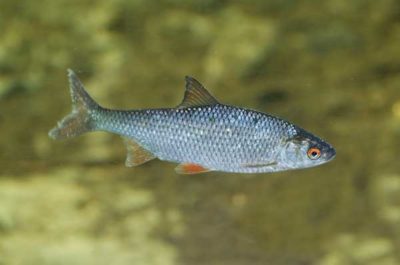
With the onset of spring, which brings the first warmth, the roach leaves great depths and rises upstream to the spawning grounds. Along the way, it actively feeds, delighting fishermen with a good bite. Spawning begins around mid-April and lasts several weeks. In some regions, depending on weather conditions (primarily temperature indicators), the spawning process may begin earlier or later.
In summer, this fish is active around the clock. Since water bodies abound in algae and living organisms during the warm period, she has no problems with food. Because of this, it becomes much more difficult to catch it; it often ignores fishing baits. However, closer to mid-autumn the picture changes. The vegetation gradually begins to sink and die, living creatures hide in the bottom soil, so the roach stops being picky. Now it’s easy to catch even for a beginner, using any bait or attachment.
In October, this fish gathers in large groups and moves from shallow water to depth. But unlike many of its relatives, such as bream, it does not remain half asleep in wintering pits all winter. On the contrary, roach remains active during the cold period. It can be effectively caught in winter only in deep areas, preferably with the remains of aquatic plants at the bottom.
It is the year-round activity of roach that captivates fishermen. But some of them underestimate this fish, so they are often left without a catch. The fact is that she is not as carefree as it seems to beginners; she can also be frightened by the silhouette of a person or loud sounds on the shore. Roach can also be unpredictable: today it is caught in one place, tomorrow in another, for several days it bites perfectly on a worm, and then its mood suddenly changes, give it something vegetable.
Roach - general information
Roach belongs to the carp family; it is common in almost all rivers and reservoirs. Roaches do not live in closed ponds with low oxygen concentrations. This schooling fish can reach a weight of 2 kg, but most often there are individuals weighing up to 300 g. In different regions of the country, roach and its subspecies are called roach, chebak, roach, ram.
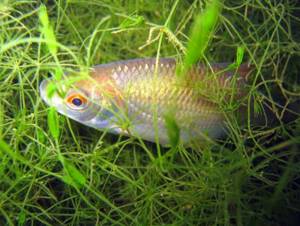
Habitats
Roach loves warm and quiet water, rich in aquatic vegetation. The unpretentiousness of the fish allows it to take root in small and large rivers, large reservoirs and small flowing ponds, quarries, and oxbow lakes. In winter it prefers the deepest parts of the reservoir, and in spring it rushes to the shallows and into flowing rivers. In summer, roaches disperse throughout the entire reservoir, and with the appearance of grass, they move into tributaries and backwaters, approaching bridges and swimming pools. Depending on the time of year, weather and mood, it may be at the bottom or in mid-water.
Finding a roach fishing spot
Roach can be caught with a fishing rod all year round. In winter, you need to look for fish in deep places, as well as at changes in depth, in thickets. Along the last ice, the roach approaches the places where melt water penetrates under the ice. In the spring, schools of fish head to shallows, rivers, and oxbow lakes, where spawning will take place. Before spawning, the roach comes close to the shore to search for food in last year's coastal vegetation. In summer, fish should be caught at a distance from the shore, at depth changes, near islands of fresh grass. By autumn, the fish gather in large schools and head to the depths.
Roach feeding
Roaches feed daily throughout the year. The main food in winter is bloodworms, caddisflies, crustaceans and other inhabitants of the bottom layers of the reservoir. In spring, the roach's diet includes animal foods such as insect larvae, worms, small leeches and shells. At the beginning of summer, the fish feeds on flying insects, dragonfly larvae, and worms. As fresh aquatic vegetation appears, the roach revises its menu in favor of greenery. By autumn, the vegetation becomes rough, the fish switches to feeding on larvae, crustaceans, and algae seeds.
What baits do roaches actively bite on?
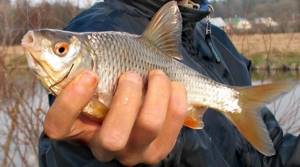
Ice fishing is carried out using baits such as bloodworms, burdock moth larvae, maggots, pieces of worms and dough. Winter fishing with reelless jigs such as “devil”, “nymph”, “goat” can be quite successful. In the spring, roaches hold in high esteem such animal baits as bloodworms, worms, maggots, as well as vegetable baits: dough, semolina, pearl barley. In summer, the fish become finicky. To please her, you need to have baits such as caddisfly, worm, goosefish, shell meat, greens, steamed grains, dough, maggot, bread crumb and grasshopper. In the fall, you need to catch roach using maggots, dough, babka, steamed wheat, peas and pearl barley.
Roach bait
At any time of the year, bait is required for successful roach fishing. Only with its help can you keep the school at the fishing point, as well as attract fish from neighboring areas. The composition of the bait depends on the time of year, water temperature and the presence of current. In the summer season, when fishing on the river, you can feed the fish with a large amount of a mixture with large fractions. Feeding fish in small bodies of water requires a careful approach. In winter, the fish is kept by periodically dropping a small dose of bloodworms or breadcrumbs. In summer, the food should be finely divided so as not to saturate the fish, especially in cold water. When the water warms up, you can add large fractions of the nozzle used.
Roach spawning
Roaches reach sexual maturity at 3 years of age. Before spawning, the body of males becomes rough to the touch due to the appearance of numerous tubercles. The fish spends its mating season in water heated to 8-10°C. This period falls on April-May. In warm weather, the duration of spawning is 5-6 days. If weather conditions worsen, spawning may be delayed for up to 12 days. The spawning grounds for fish are floodplain meadows flooded with water, where there is last year’s vegetation and shrubs. Caviar is laid by roaches at a depth of 0.3-1 m; during mating games, the fish splash noisily.
Roach bite by season
The roach bites all year round, taking breaks from feeding during the low winter period and during spawning. In winter, the best time for ice fishing is considered to be the last ice with a stable thaw. But even during the first ice period there are moments of active biting. In spring, the best time for fishing is the pre-spawning period, when the fish fatten up in large schools. In summer, the fish bite is unstable, especially in hot sunny weather. After the weather gets colder in the fall, the bite improves.
Fishing methods
Roach is usually caught with light and elegant gear:
- float fishing rods (winter, fly, match, plug);
- bottom fishing rods (feeder, picker, elastic).
Appearance
Roach is a small fish. It belongs to the carp family and, like all cyprinids, has pharyngeal teeth. The fish remains active throughout the year. In some areas of Siberia and the Urals it is called chebak. There is another name - soroga or path. The back is much darker than the belly. In some reservoirs it is almost black, in others it is gray, but in any case with a blue or greenish tint. The sides and belly have a silvery tint. The scales are quite large, dense and non-rigid. The base of the dorsal fin is located exactly above the pelvic fins. The color of the anal, pectoral and pelvic fins varies from red-gray to orange. The food supply of roach consists of invertebrates and larvae. In summer, the fish expands its menu with filamentous algae.
Roaches reach sexual maturity at three years of age, and under unfavorable conditions at five years of age. It begins to spawn at a water temperature of at least 8°C. In different regions, this period occurs at different times from March to the end of May. Roaches live in schools and spawn together. The spawning of this fish is noisy. The eggs stick to the stems and leaves of aquatic vegetation, and after a couple of weeks they turn into larvae that can feed on their own. The average lifespan of a roach is 20 years. Hypothetically, by this age, her body length could reach 0.35 m, and her weight would be about 1.5 kg. But in reality, even specimens weighing 0.7 kg are rare. The average weight of a roach is from 100 to 300 g. It takes the fish several years to reach it. A five-year-old individual weighs about 80 g. Photo of roach Roach is often confused with rudd, but they can be distinguished. The photo clearly shows that they have different eye colors. Photo of rudd In roach it is red, in rudd it is golden with a red spot.
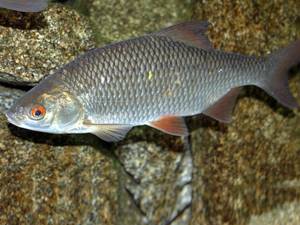
Features of the spawning process
In the morning, when roach spawning begins, fishermen can observe from the shore a large school of fish swimming next to the reeds. Usually spawning occurs in the morning, but in cold conditions the fish prefer lunchtime.
Evening roach spawning time is an exception to the rule; it occurs in exceptional cases when there is strong warming or there are so many fish that some individuals were unable to get to the shore.
Small individuals go to spawn first, and trophy specimens tend to spawn towards the end of the period. Females lay a lot of eggs, this is the only way for fish to survive, because roach has many natural enemies. They look for areas among aquatic vegetation and try to lay eggs on the greenery; they are attached with a sticky base to the leaves. It is easier for males to fertilize eggs that are laid on greenery. Throughout the spawning period there is a strong noise, only slightly inferior to the spawning of crucian carp.
Read more
What is a rubber shock absorber for fishing and how to use it?
Spawning
Puberty in roaches occurs two years after birth. Spawning of roach begins later than ide, pike and some other fish species. But somewhat earlier than bream, catfish, pike perch and carp. In central Russia, roaches spawn in the river bed after the water subsides. In the Kama, Volga and Oka, this fish goes to spawn in oxbow lakes and flood lakes. On the Don, lower Volga and Dnieper, roach spawn until the flood. In the Don, it spawns early, in March. The beginning of spawning depends on the water temperature. If the area is located closer to the south and the spring is warm, the reservoirs heat up faster. In this case, spawning begins earlier. Typically, roach spawning begins in late April - early May. At this time, the water temperature already reaches 10 to 15 degrees.
In reservoirs located to the north and in the Middle Urals, roach spawns in the middle or end of May. Before the start of spawning, the roach becomes covered with a rash in the form of whitish spots. Then they become darker and harden. The scales become rough to the touch. Traces of hard spots disappear a week after spawning. Before laying eggs, female roaches rise upward in large schools. The males emerge behind them. Due to the fact that after spawning fish are caught without milk and eggs, it is assumed that the reproductive products are spawned in one go and mature at the same time. Roach eggs are transparent, soft, with a slight green tint.
They stick to underwater rocks, snags, etc. The eggs are located very closely, and when they are on the moss, they look like bunches of grapes. The largest clusters can contain over 84 thousand eggs. The number of young roaches largely depends on favorable environmental conditions. In stagnant water, spring storms are very disastrous for juveniles, during which many eggs are washed ashore. The fry are not at all afraid of rough water, so they go to depth only in June. In rivers, many juveniles are carried away by floods.
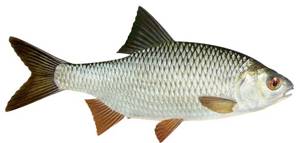
When do roaches go to spawn?
Roach, like other cyprinids, is a heat-loving fish. Despite this, the fish begins to actively prepare for spawning even before the ice disappears from the reservoirs. During the last ice, the chances of catching a roach double.
During this period, the fish tries to gain weight and stock up on protein. In the spring, roaches are in a hurry to eat before spawning, so fishing with worms, maggots or bloodworms will be very effective.
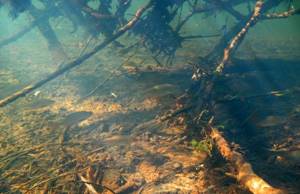
During the pre-spawning feast, roaches form large schools. Active biting will continue throughout the day.
The timing of the spawn is dictated by the weather and climate. During the spawning period, the fish moves from the south towards the north. Egg laying begins when the water warms up to 12 degrees. In the northern regions, where roaches are more resistant to cold, a temperature of 8 degrees is sufficient.
The duration of spawning also depends on the weather. A warm, sunny spring can shorten the spawning period to a week. In bad weather, spawning can be delayed, sometimes stop and resume only during stable warm weather.
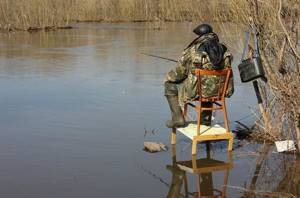
The roach is not used to leaving its native expanses in search of a spawning site. This explains the reason why fish start spawning earlier in small lakes and ponds. In large rivers with rich water areas, the water reaches its optimal temperature later.
Growth of young roach
Young common roach begin to emerge from the eggs after a week, in warm weather. Often ten days after spawning. Less often - after two weeks. The fry swim close to the surface of the water. They feed first on their yolk sacs and then on small plankton. At first, the fry hide from enemies among the algae. There she gradually begins to feed on crustaceans and plants. In rivers, young roach are found near swimming pools and rafts. There she hides from predators and finds food. In July, young fish begin to swim into open water. It finally leaves its shelter in the form of aquatic thickets in August. In autumn, young fish go together with adult fish to spend the winter in deep holes. In some lakes, roaches sometimes swim to the surface for food even in late autumn.
Lifestyle
Roach is found in rivers, lakes, and reservoirs. It prefers a schooling lifestyle, with small fish staying in shallow water, near the coast, while large individuals prefer deeper places. It does not necessarily gather in schools based on size and age; you can often see both small and very large roaches in one school.
The best places for it are thickets of aquatic vegetation. Roach is an unpretentious fish, so it can often be found even in heavily overgrown reservoirs. It does not like strong currents, although it is found in rivers, but it is worth looking for it in areas with slow currents.
The fish is quite cautious and will quickly leave at the slightest sign of danger, so the fisherman should not attract undue attention to himself. In winter it gathers in large flocks and searches for deep holes; in winter it prefers to stay near the bottom.
Roach lifestyle
Roach is a schooling fish, schools are divided by age, sometimes among small-sized fish there are old large individuals. Small fish, as a rule, live in the coastal zone, large fish prefer the depths. The roach's way of life is that schools of fish constantly move around the reservoir, but at different times of the year they prefer places with certain conditions. Seasonal migrations are associated with weather conditions and the availability of food. In winter they go into winter holes and edges. In the spring, when the ice begins to melt, the fish move closer to the shore, the spawning period begins, and schools rush to the estuaries. In the summer, with the end of the spawning period, the roach again returns to quiet pools and rivers with a leisurely flow, here it will stay all summer. In autumn, when water temperatures begin to drop, roaches gather in schools and descend to the deepest places, where they will spend the winter.
Roaches are active in the morning hours, during the daytime they move more around the reservoir, large individuals are more cautious, so they leave their shelters and holes in the evenings; with the onset of darkness, the biting stops completely.
Roaches cannot tolerate musty water and temperature changes. When the water in the reservoir drops to plus 8 degrees, the fish’s reaction becomes inhibited, it is inactive and eats little. In winter, roach gather in flocks and go to spend the winter in pits; at this time of year, they are in a dormant state and almost do not move around the reservoir.
Nutrition
The basis of nutrition is zooplankton, although this fish is omnivorous. It also feeds on crustaceans, algae, insects, insect larvae, water mites and other aquatic organisms. It is worth noting that in different bodies of water (and even in different parts of the same body of water) roaches may have different taste preferences. Therefore, in one lake it can be perfectly caught with a worm, but in another it can completely ignore this bait, but will greedily grab an ordinary crumb of bread.
The zhora period begins after spawning, usually in May and June. During these months she bites on almost everything. In general, given its omnivorous nature, there are many options for bait, with experienced fishermen often taking several types of bait, using them in turn and determining the most effective one.
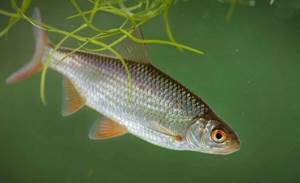
Value
The disadvantages of roach include a large number of small bones, however, there are cooking techniques that neutralize this factor. The calorie content of this fish meat is 88 kcal, it contains no carbohydrates and a lot of proteins. Contains many amino acids that are easily digestible. 100 grams contain 2 grams of fat and 17 g of protein. The meat is not fatty.
The meat contains a lot of phosphorus and calcium, but in general, this fish has sufficient nutritional value. The main thing is to be able to cook it and catch large roach. The trifle is only suitable for fish soup.
Natural enemies of roach
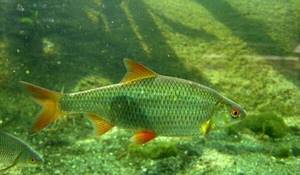
Photo: What a roach looks like
In their natural environment, the shy and small-sized roach has plenty of enemies. In the spring and very early summer, a huge number of eggs of this fish die, because... actively eaten by eels. Predatory perches and pike can also be counted among the enemies of roach; they constantly accompany its schools, often making attacks during the spawning period. A predatory fish watches for a young roach in the underwater growth, where it swims in search of plankton. Pike-perch are not at all averse to snacking on roach; they attack the fish, hitting them with their heads, and then biting them with sharp fangs. Voracious chubs feed on roach fry and inexperienced young animals.
Fish enemies also include some birds, for example, cormorants, which eat half a kilogram of fish in one day. Kingfishers also feast on fry and small fish, which do not exceed ten centimeters in size. Herons, on the contrary, love larger roaches, eating mature fish, about 35 cm long. Waterfowl grebes graze in shallow water, where they dive deftly, catching small fish, the length of which usually does not go beyond 16 cm. Seagulls also will not refuse a fish snack .
In addition to predatory fish and birds, roach is eaten by otters, muskrats, and minks, which hunt it along the shores. Small-sized fish are swallowed instantly right in the water, while larger ones are eaten on land. In addition to various representatives of the fauna, all kinds of diseases affect the roach, from which the fish also die. Black spot disease occurs in fish because they eat snails that are infected with the larvae of a parasitic worm. Black spots appear on the body of a sick fish; this parasite does not pose a danger to humans.
By feeding on water fleas, roaches become infected with ligulosis. This disease is characterized by the development and growth of a tapeworm in the abdominal cavity of the fish, which gradually begins to compress the internal organs of the fish, causing the roach to become infertile and soon die.
The enemies of roach can also include people who skillfully handle a fishing rod. Fishing enthusiasts catch a lot of roach, from which they prepare a variety of dishes. Fish meat is quite tasty and has low calorie content, so it is also suitable for those who take care of their figure by adhering to a diet.
Interesting fact: In Great Britain, roaches are caught for entertainment, and almost all fish caught are released back into the water. Although roach is considered edible, the British do not value it; they prefer other types of fish.
Population and species status

Photo: Roach fish
The distribution range of the roach is very extensive; this small fish adapts to various bodies of water. She is unpretentious to the environment and is omnivorous. The population size of this fish does not cause any concern among environmental organizations; on the contrary, in some reservoirs there are too many of them.
Back in the 70s of the last century, the demand for roach in Northern Europe fell sharply. The fish eats zooplankton and grows very slowly, which leads to the fact that the reservoirs where they live begin to become very overgrown and bloom, because they are not caught for industrial purposes. Catching roach leads to the restoration of the amount of zooplankton, a decrease in the nitrogen and phosphorus content in the water, which contributes to the fact that valuable fish species begin to grow and develop in its place.
Large fish can still be sold, but in the vastness of central Europe it is very cheap, and most fish are used to produce feed for livestock and even biodiesel. A project has been launched in Finland that involves catching up to 350 tons of roach annually. It is worth noting that ram and roach are of greatest commercial importance; this fish is sold both fresh and dried.
So, roach remains a plentiful fish, it does not have any particular industrial value, and in some countries it is practically not consumed as food. Although a huge number of fry and eggs are eaten by predatory fish, birds, and other animals, the roach population is not in danger of extinction due to this, therefore it is not under special protection and does not need special protective measures.
Interesting fact: Roach can interbreed with rudd, chub and bream, which happens quite often. Such hybrids have very faded colors and most of them are not able to reproduce, but even this factor does not have a significant negative impact on the size of the fish population.
In conclusion, I would like to note that for everyone, roach has its own value: for some it is an excellent trophy in sport fishing, others adore its gastronomic features, preparing a lot of not only tasty, but also very healthy, dietary dishes, others catch roach for the purpose of further sale. And remembering the taste of dried roach, many people’s mouths begin to water.
How not to confuse roach with rudd
Distinctive features of roach:
- The pelvic and dorsal fins are at the same level; in the rudd, the ventral fin is slightly extended forward above the dorsal fin;
- The roach has a lower lip that protrudes forward;
- The roach's eyes are red, the rudd's are golden yellow.
Sometimes roach can interbreed with rudd, bream and other types of fish. This happens if they all spawn in one place. The result is hybrid forms that confuse fishermen and cause surprise and confusion as to who was caught.
Lures
| Season: | Lures: |
| Spring: | maggot, caddis larva, worms, sometimes plant baits work |
| Summer: | corn, barley, star pasta, (sometimes peas), maggots, ant larvae, maggot larvae, dung and other worms, bread, salted bread, dough, semolina |
| Autumn: | maggot, lard, worm, mealworm |
| Winter: | maggot, bloodworm, lard, worm, mealworm |
Pellets with a diameter of up to 4 mm can be used practically at any time.
Tip: roach loves various attractants, so any bait can be pre-treated with them. Anise and hemp scents are suitable.
Live baits can be tossed with breadcrumbs, coconut flour or peanut flour. You can try using colored maggots, but it depends more on the color of the water in the pond.
To improve the game and increase the attractiveness of the bait, you can try using scented foam balls. They are put on the hook by lifting it to the eye of the hook, and then the bait is put on.
On many reservoirs, instead of hooks, winter jigs work better.
Lures and baits
For ice fishing, bloodworms, burdock moth larvae, maggots, pieces of worms or dough are successfully used. Roaches also actively bite on reelless jigs, such as “devil”, “nymph” or “goat”.
In spring you can fish with both animal and plant baits. Among animal baits, fish love bloodworms, worms and maggots. From vegetable attachments you should choose dough, semolina or pearl barley.
In summer, roaches are difficult to please. It is necessary to stock up on caddis flies, worms, goosefish, shell meat, herbs, steamed grains, dough, maggots, bread crumbs and grasshoppers.
In autumn, fish readily bite on dough, maggots, babka, steamed wheat, peas and pearl barley.
Boilies are used to catch large fish.
Roach bait
For successful fishing at any time of the year you cannot do without bait. This is how you can keep the flock in the right place, as well as lure roaches from other places.
The choice of bait depends on the season, water temperature and current.
In spring, the bait should be finely dispersed so as not to overfeed the fish. You can increase the size of the bait when the water warms up.
In summer, roaches can be fed abundantly using bait with large fractions. Be extremely careful when feeding fish in shallow waters.
In winter, bloodworms or breadcrumbs will be enough for successful fishing.
Fishing methods
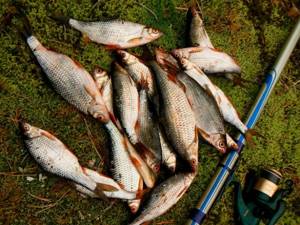
Fishing is one of the most exciting activities for a person, but this does not mean that the fish itself will cling to the hook. Fishing is also hard work, without which it is unlikely that you will be able to catch at least one fish. Despite the fact that there are always enough roaches in any body of water, they are not so easy to catch, since several factors influence successful fishing. This includes the personal skill of the fisherman, the ability to choose the right gear and bait, and the ability to choose a promising place. Often factors beyond the control of the fisherman are included. As a rule, these include natural factors such as atmospheric pressure, water temperature, etc.
Roach can be caught all year round, but during periods of severe cold it is better not to go fishing, as you may be left without a catch. Roaches are most active during the first and last ice conditions, in the spring during the pre-spawning and post-spawning periods, as well as in the summer, especially in the dark. Before spawning, roach gather in numerous schools and stay within the aquatic vegetation, where they actively feed. During this period, it can be caught with almost any bait, such as a worm, bloodworm or maggot.
When fishing for roach, the use of bait is purely symbolic. Ingredients such as breadcrumbs, cake or makha, rolled oats, small bloodworms with the addition of dry clay or clean sand are suitable for this. Roach can be caught well on a regular float rod with a jig. The fishing rod is equipped with a fishing line with a diameter of about 0.12 mm and a leash with a jig equipped with a long hook number N14-N16. The length of the fishing line is chosen to be about 20 cm shorter than the length of the rod. To prevent a fairly thin fishing line from breaking when the fish jerks, it is better to use a rubber shock absorber in the rig, about 50 cm long. The fishing line should have at least 3 weights, of which the lowest one should have the least weight. When the roach takes the bait into its mouth, it lifts the rig, but it should not feel the weight of this sinker. With the arrival of spring, when there is no longer ice on the reservoirs, the roach stays as close to the coastline as possible or enters bays where the water is cleaner. After spawning, the roach chooses quiet places with little current for its parking.
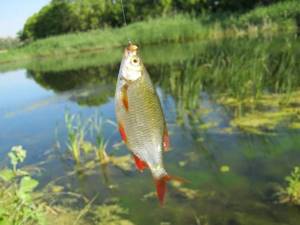
When it gets really hot outside, this fish goes into the depths or hides from the heat in dense thickets of aquatic vegetation. The roach does not take bait from the very bottom, as it prefers to feed at a slight distance from the bottom. Before the water warms up to +10 degrees, roach moves in numerous flocks along the coastline and eats everything that gets in its way. To catch it during this period, a rod about 5 meters long is suitable. Casts should be made as close as possible to thickets of aquatic vegetation and bites will follow one after another. Lures of any origin are suitable as hook bait. The roach is actively caught until the spawning stops. During this period, the fish is not afraid of anything and can be caught with bare hands. Large pike and perch are especially lucky during this period, as they follow the schools and also actively eat them, and they don’t even try to hide. Therefore, during the spawning period, fishing for roach can be the most effective.
After spawning, this fish is not so easy to catch, especially without bait. After catching a dozen individuals, you should definitely add bait. Catching roach in the summer is associated with difficulties, since the fish are no longer so hungry. As a rule, during this period its bite is quite sluggish. She can take the bait into her mouth and immediately spit it out. But even at such times there are baits that the fish are unlikely to refuse. This is, first of all, greens, or rather mulberry.
A grasshopper can be no less tempting for a roach. Fishing with this bait is necessary near thickets of aquatic vegetation. The roach can linger at the fishing point for some time if the fish are constantly fed in small portions. You can use any ingredients as bait, even ordinary bread. The bite may be most active if the place is fed in advance with cereals or any porridge. With the arrival of autumn, the roach begins to show somewhat greater activity if you use a dung worm, bloodworms and other baits as bait on the hook, throwing them into the aquatic vegetation. When the arrival of winter is already felt, the fish gather in numerous schools and go into the depths.
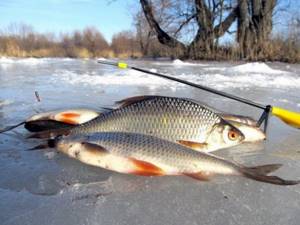
From this moment, a new stage of catching roach with a winter fishing rod begins, especially if the reservoir is already covered with ice. For winter fishing, you will need a fairly thin fishing line, 0.1-0.12 mm thick, as well as a pellet-type jig weighing about 4 grams. The roach does not tolerate sudden movements, so manipulations with the pellet should be slow and smooth. During this period, the fish can easily feed from the bottom, so there should be systematic tapping of the bait on the bottom. And yet, the most frequent bites are observed at a slight distance from the bottom. From the end of December to March, it is better to catch roach using small bloodworms, placing no more than two larvae on the hook. In order for the bite to be constant, bait should be systematically added to the hole. During this period, bites on standing tackle are no less frequent. The bait must be constantly changed to a fresh one, without leaving gnawed bloodworms or mucus from the fish on the hook, as this alarms the fish.
In such winter fishing conditions, you should use the thinnest fishing line. About 0.08 mm thick, maybe thinner. The jig chosen is also small, about 2 mm in size with a hook number N18-N20. When fishing, the roach practically does not resist in winter, but with the arrival of spring, which the roach certainly feels, a fish weighing no more than 100 grams can easily tear such thin tackle. Therefore, with the arrival of spring, you need to arm yourself with more reliable gear. A simple float rod is more suitable for fishing in still water or in slow currents. In this case, it is necessary to lift the bait from time to time, and this must be done slowly. It is during the ascent that roach bites occur. The bait is raised to a height of no more than 30 cm from the bottom. Some experienced fishermen catch roach on a spinning rod, using artificial flies as bait. The better the quality of the bait and the more realistic it is in depicting an insect that has fallen into the water, the more effective the fishing.
The most effective fishing for roach can be from early morning until 10 o'clock, as well as from 18 o'clock in the evening until full twilight. When fishing in winter, you can count on a significant catch during thaw conditions, when fish can rise from the bottom to the upper layers of water. In any case, to stay with the catch, you will have to work hard, regardless of the time of year. If you don’t know what a roach eats and where it can be found in a body of water, then you shouldn’t count on a successful fishing outcome.
When does it start to bite after spawning?
In spring, the bite will begin to intensify when the water warms up to 6 degrees, and will last about 14 days. The bite during this period will be good. Before spawning, the bite will decrease significantly. A week after spawning, the roach becomes active again. However, catching the silver beauty is not so easy. Sometimes roach can be caught well after a warm night in the early morning, sometimes in the afternoon, sometimes in the evening. You can't predict exactly when you'll get lucky. Often the zhor begins an hour before the rain starts. In general, we can say that the warmer the weather, the more active the bite.
Roach activity will signal whether spawning is in progress or has already ended. If the bite is sluggish, we recommend stopping the rig for a while above the feeding area. In lakes with no current, it is better to use equipment weighing no more than 1 gram. A float in the form of a spindle with a slightly overloaded rig has proven itself well.
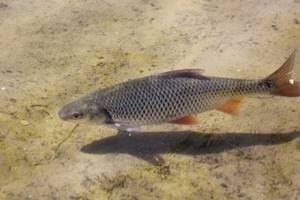
If there is almost no bite, take care of especially light equipment from 0.2 to 0.4 g. In general, after spawning, roach likes to sink to the bottom to a depth of 4 m. The main method of fishing in this case is smooth stretches with pauses. The hook will be important.
Cooking recipes
Many fishermen successfully catch this fish, but few of them know how to cook roach? By and large, they don’t need this, because the wives do the cooking. Here are some interesting recipes.
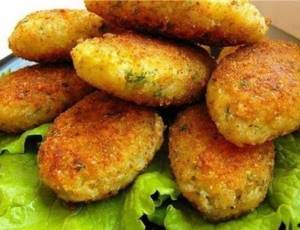
The simplest dish is roach cutlets. Since this fish is small, it is not at all necessary to remove bones from it; it is enough to remove the entrails, wash it, and cut off the head and fins. The carcasses prepared in this way are passed through a meat grinder several times, after which a little lard (1:6), a couple of slices of a soaked loaf, an egg, chopped onion and garlic, ground pepper, and salt are added to the resulting minced meat. The amount of the last four ingredients is to taste. Cooking consists of three stages. First, you need to form cutlets from the minced meat, then roll the pieces in breadcrumbs and fry on both sides over low heat using vegetable oil. Each side takes approximately 4-5 minutes. When the roach cutlets acquire a golden crust, they can be removed.
Another fish delicacy is dried roach, especially if it contains caviar. To do this, take fish weighing up to 0.5 kg. In the spring, you don’t have to gut it, since there is no greenery in the stomach at this time of year, which gives a bitter taste. The fish, washed from mucus, is first salted in an enamel container, generously sprinkling each row of carcasses with coarse salt. To make them better salted, place a plate on top, and place a heavy load (a brick or a jar of water) on it. After 2 days of salting, the fish is soaked in cold water for 2-3 hours. When the fish starts to float, it means it’s time to take it out of the water and prepare it for drying, namely, dip it in a solution of 3 percent vinegar, the purpose of which is to repel flies. Roach is dried in the open air at a temperature of 18-20 degrees. Depending on its size, this may take from 1 to 4 weeks. After this, it should “ripen” for the same amount of time in a fabric bag in a cool room.
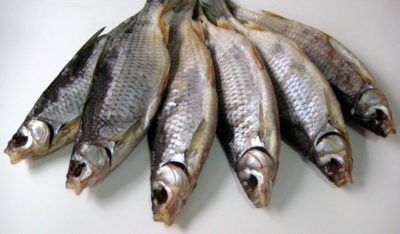
Roach baked on coals turns out to be very tasty. As they say, in nature and with smoke. You can cook it this way right on the banks of a river or lake. To do this, the fish is cleaned, the gills are removed, washed and cut into portions. Rub each piece with salt and pepper, add a little butter and wrap it in foil. In this form, they are buried in hot ashes so that the smoldering coals are on top. Half an hour of tedious waiting, and the dish is ready! The “smoky” fish can be decorated with herbs, and the best side dish for it is considered to be jacket potatoes baked in the same way.
TOP 5 wobblers for perch
Burbot: DESCRIPTION, REPRODUCTION, HABITAT, FOOD, PHOTO, VIDEO, POPULATION
PIKE: SPECIES, REPRODUCTION, FOOD, SIZE, ORIGIN, PHOTO, VIDEO, DESCRIPTION
Tench: SPECIES, DESCRIPTION, REPRODUCE, BEHAVIOR, NUTRITION, PHOTO, VIDEO, ORIGIN
CRUCCIAN: SPECIES, DESCRIPTION, FOOD, REPRODUCE, PHOTO, VIDEO, POPULATION, BEHAVIOR
ROACH: DESCRIPTION, SPAWNING, LIFESTYLE, FOOD, PHOTO.
What is used to catch spring roach and what is good for float tackle?
Fish caught:
- into the wiring;
- to the side nod;
- to the feeder;
- on the float;
- for bottom tackle;
- on the diverter leash.
When there is no wind, most fishermen like to catch roach on the river in the spring using a float rod. The tackle is easy to assemble. If there is no current in the fishing area, then a small float is installed on the fishing line, which is made from a champagne cork. You can feed the fishing point with bait and then you are guaranteed a catch! When it’s windy, you can assemble a heavy tackle by placing a heavy float and weight.
How to rig a delicate float rod
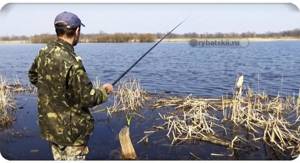
It is better to catch spring roach using thin tackle. Fishing from the shore is carried out using long rods of 4–7 meters, on which a reel with fishing line with a diameter of 0.1–1.2 mm, a float, a sinker, a jig or a hook is installed. It is more convenient to fish from a boat with short fishing rods of 2–3 meters, with the possibility of long casting.
The float equipment for roach is assembled depending on the needs of the fisherman: a fishing line with a float is equipped with a small sinker with a hook or jig. When casting “thin” gear, there is less noise and the fish are not scared, and this affects the positive result of the entire fishing.
Technique for catching roach in spring using a float rod
If the angler has found a promising point, then fishing for roach in early spring will become very exciting. You can feed the fishing spot with white bread and start fishing. After 15 minutes the fish will accumulate at the point. If chebak and sorog actively bite, then maggot is an ideal bait.
The float is loaded so that the tip of the bite alarm sticks out of the water by 1–2 cm. The sinker should lie on the bottom. Thanks to this, even the most delicate bite will be visible. Sometimes the fishing line is equipped with several hooks on which different baits are attached. Then you can draw conclusions about what fish bite better.

